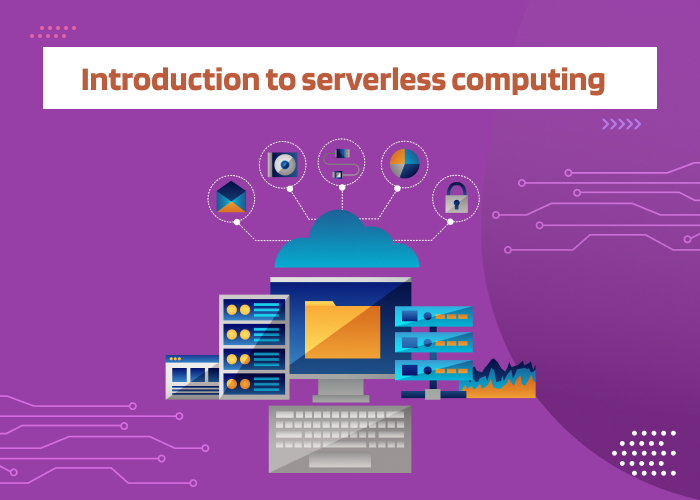Introduction to serverless computing

Key characteristics of cloud computing include:
- No Server Management: Serverless computing abstracts away the infrastructure, allowing developers to focus solely on writing code and building applications without the need to worry about server provisioning, scaling, or maintenance.
- Event-Driven: Serverless functions are typically triggered by events, such as HTTP requests, changes in data (e.g., database updates), file uploads, or scheduled tasks. Functions are executed in response to these events.
- Automatic Scaling: Serverless platforms automatically scale your application based on the number of incoming requests or events. Resources are allocated dynamically, and you are billed based on the actual usage of resources.
- Pay-as-You-Go Pricing: With cloud computing, you are charged based on the actual execution of functions or the resources consumed during the execution. You don’t pay for idle time, which can be cost-effective for applications with varying workloads.
Popular serverless platforms include AWS Lambda, Microsoft Azure Functions, Google Cloud Functions, and others. These platforms provide the necessary infrastructure and services to deploy, run, and scale serverless applications seamlessly.
Pros of using serverless computing
Fast Deployment
Development teams can concentrate on building code that can thrive in the modern world thanks to a serverless architecture. They no longer have to worry about maintaining infrastructure, a great deal of complexity is eliminated, and they have additional time for app development and optimization.
Cost-Efficient
When a business doesn’t have to maintain hardware, it may save expenses associated with infrastructure and operations. Teams can also modify their budgets in accordance with the demands of their services. Furthermore, the cloud service meter starts when the request is made and ends when execution is completed, so the firm only needs to pay for what it used.
Scalability & Better UX
For a quicker and more seamless experience, serverless computing helps lower the latency time between servers communicating. Serverless services can assist in improving user experience by being faster and more economical when it comes to parallel processing. Furthermore, a server’s capacity is not a constraint on businesses. Thus, the cloud service facilitates rapid scaling.
High Availability
Serverless architectures often leverage the underlying cloud provider’s infrastructure to ensure high availability and fault tolerance. Functions are distributed across multiple data centers, reducing the risk of downtime.
Use-cases serverless service
- Backends of API: With a serverless platform, each operation may be transformed into an HTTP endpoint that web clients can use. These activities are known as web actions when they are turned on for the web. After obtaining web activities, you may combine them into a fully functional API by utilizing an API gateway that offers further security.
- Microservices: Supporting microservices architectures is now the most popular use case for serverless technology. The goal of the microservices approach is to build tiny, single-purpose services that may interact with one another via APIs. Although PaaS may also be used to build and run microservices, serverless architecture has acquired a lot of traction because of its tiny code footprint, automated scaling, and no-charge pricing model for unused capacity.
- Data processing: Working with organized text, graphics, audio, and video data is a good fit for serverless computing. It can be used for tasks like data enhancement, alteration, verification, noise reduction, and cleansing.
- Authentication and Authorization: Serverless can be used to handle authentication and authorization processes, such as user login, token generation, and access control.
Conclusion
In conclusion, web applications, microservices, data processing, Internet of Things, and other use cases find serverless computing appealing due to its pay-as-you-go pricing model, automated scalability, and event-driven nature. Before implementing a serverless architecture, it’s crucial to thoroughly assess application needs and potential limits, even if it provides considerable benefits in terms of cost savings, agility, and scalability.
FAQs
How does serverless pricing work?
What are the key benefits of cloud computing?
What are common use cases for serverless computing?
Are there any downsides to cloud computing?
Which cloud providers offer serverless platforms?
Ravi Bhojani is the Chief Marketing Officer (CMO) at Alian Software, where he spearheads the company’s marketing strategies and drives its brand presence in the competitive IT services landscape. With over a decade of experience in the technology and marketing sectors, Ravi has consistently demonstrated his ability to blend innovative marketing techniques with deep industry knowledge to deliver outstanding results.